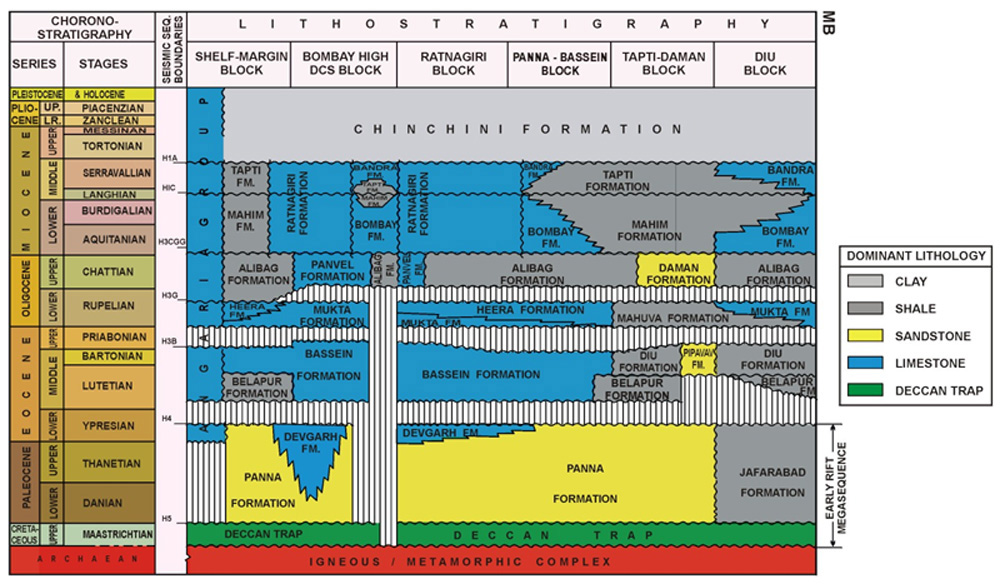Dahanu Fm
Type Locality and Naming
LOCAL? (Not in NDRDGH regional): Well B – 12, (depth interval 2445 – 3700 m). [Original Publication: Basu, D.N., Banerjee, A and Tamhane, D.M. 1982. Facies distribution and petroleum geology of Bombay Offshore Basin, India. Journal Petroleum Geology, Volume 5, pp. 57-75.] Reference well: Well Tarapur – 1
[Figure: Lithostratigraphy in Mumbai Offshore blocks (from NDRDGH.gov.in; after Jitendra Misra, 2009)]
Lithology and Thickness
Shallow-marine marl. In the type section, the formation consists of thin limestone bands, alternating with shale in the upper part. Carbonate percentage is about 6%. The limestone is cream to buff, micrite and fossiliferous micrite, mostly tight and dense. The shale is dark to light grey, occasionally silty and laminated. In the lower section, mostly shale, claystone and minor thin and variable silt and sandstone layers occur. In reference section, in Tarapur structure, a few thick micritic limestone bands occur in the lower section. The rest of the section is characterized by shale with alternating minor thin limestone bands. In South Tapti, shales with minor silt bands occur. 1255 m thickness in Dahanu area well.
Relationships and Distribution
Lower contact
The lower contact of this unit is unconformable as in the case of the Bassein Fm, although the unconformities are not as well marked as on the uplifts such as Bassein structures.
Upper contact
The upper contact of this unit is unconformable as in the case of the Bassein Fm, although the unconformities are not as well marked as on the uplifts such as Bassein structures.
Regional extent
GeoJSON
Fossils
The formation characterized by Truncorataloides rohri, Hantkenina, alabamensis, Nummulites acutus, N. fabianii and N. fichteli.
Age
Depositional setting
An inner-middle neritic environment of deposition is inferred for the formation.
Additional Information
